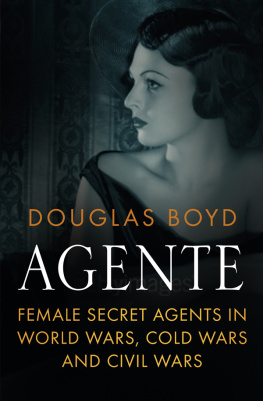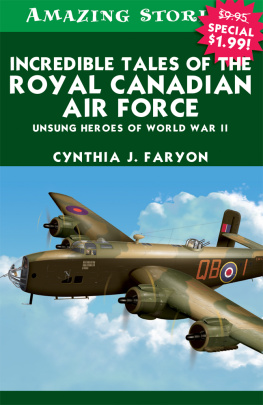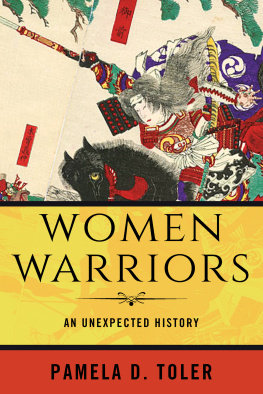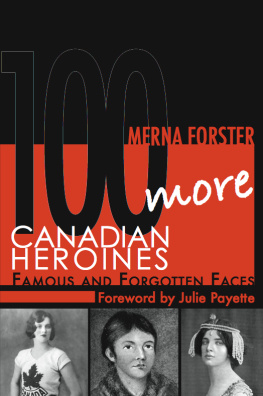Foreword
I was not the first Canadian journalist to look to the small number of American and British women reporters during the Second World War as role models for their firsts in conflict coverage. The fact that three Canadian women chose this same path at the beginning of the last century to cover what would later be known as the First World War has been buried by time. And yet Mary MacLeod Moore, Beatrice Nasmyth, and Elizabeth Montizambert went to extraordinary lengths and put themselves at risk to document what was happening to civilians and soldiers throughout Britain and France from the very start of that war.
One hundred years after these three women forced themselves onto the front pages of Canadian newspapers as war correspondents, author Debbie Marshall has pieced together the stories of their lives and their work, resurrecting their legacy. Marshall has hunted down dispatches and combed through personal letters to offer a picture of who these women were and what motivated them.
Among them, these three women published thousands of stories that were dispatched to Canadian publications from the Vancouver Province to the Montreal Gazette to the Toronto Star and Saturday Night Magazine . Those stories included interviews with high-ranking officers and often heavily-censored coverage of the Allied military. But it was the dedicated attention to regular people alternately defiant and fearful, living in the midst of violent attacks, personal loss, deprivation, and uncertainty that comprised much of their work at the time and continues to set them apart today.
As blackouts were imposed across London, as German bombs fell, as Parisians formed long queues for food and Zeppelins buzzed the skies above, these women kept moving around the cities and travelling into the countryside, reporting, offering a glimpse of civilian life amidst the disruption and danger. What was unfolding on the front lines was secretive and censored one of the women appeared to get around that by speaking to the wounded soldiers at hospitals, learning more about actual battles and also about the vulnerability of Allied soldiers, six million of whom would perish during that conflict.
All of this is very significant. For many of us who came of age covering wars in the 1990s, the American journalist Martha Gellhorn was the war correspondent to emulate: she had disguised herself as a nurse to board a British naval ship headed for the beaches of northern France at the time of the D-Day invasion during the Second World War. Her work, which centred on women and children and on the wounded in hospitals, stood out from the coverage of so many male reporters at the time, which focused almost exclusively on front line battle information and, for the most part, ignored the plight of civilians. Gellhorn brought a humanity and empathy to the coverage of conflict, and she was revered by journalists, male and female, for decades, credited with changing the face of war reporting. Unbeknownst to us all, three Canadian women had begun that change one war earlier, to little fanfare.
Nasmyth, Moore, and Montizambert came from different backgrounds from privileged to poor and were anomalous among women of the day because they pursued full-time jobs. They each began their journalism career in the womens pages of newspapers, covering fashion, gossip, and household issues, writing columns and so-called lighter fare directed at female readers; for almost all women of the time, that was the only way in to the male-dominated field of journalism. That is not the typical path to assignments in conflict zones today, but this was the early 1900s: the working assumption was that only men were capable of hard-hitting coverage. The women Debbie Marshall profiles were part of a small cadre of females breaking new ground and changing the rules.
By the standards of journalism today, some of what they did raises eyebrows. For example, Mary MacLeod Moore made it clear she and many in the British press initially had no problem with the rampant censorship, which extended beyond security to propaganda efforts to try to control public morale. For her part, at the end of the war, Beatrice Nasmyth was acting as the publicity secretary for an official Canadian delegate to the Paris Peace Conference while continuing to write articles about the conference and the signing of the Peace Treaty at Versailles. Remarkably, Marshall suggests Nasmyths articles appeared without a byline because of the old prejudice of female journalists not being able to write serious news, rather than the problem of her blatant conflict of interest, which would surely not be tolerated today.
Even with these missteps, the womens contributions to conflict journalism were significant and have been ignored for far too long. To learn of their dedication to the story at times of great hardship is both an inspiration and, admittedly, a bit of a surprise for me. The fight for women to be taken seriously as journalists covering all topics of weight has been a long one.
In fact, it would take another eighty years for the numbers of women covering war to truly expand. Yes, women were reporting through the Second World War, and of course many covered the Vietnam War. But I belong to that first generation of women to be assigned to conflict zones in large numbers by major western news organizations. We were reporters, photographers, producers, editors, sound technicians, and translators. It felt, at the time, as if our (almost exclusively male) news bosses had no choice there was simply no reason to think that women already covering politics, the military, finance, foreign affairs, and domestic unrest would be anything but capable in the field of conflict. To deny us was unacceptable.
In the early 1990s I was dispatched by CBC Television News to cover what became a growing array of troubles that involved military might and citizen rebellion: from the U.S. invasion of Panama (198990) to the Israeli-Palestinian conflict to the collapse of the Soviet Union and the resulting civil war in Georgia. The desire for independence that saw success in the former Soviet republics such as the Baltics and Ukraine was also confronting Eastern Europe and it was ripping through Yugoslavia one republic at a time. Croatia was still smouldering when I began chronicling the viciousness in the Bosnian countryside and the siege of Sarajevo.
My first trip into Sarajevo was harrowing: our van was loaded with a backup fuel supply of eight jerry cans of gasoline as we drove across the tarmac of the Sarajevo airport from the Serb-controlled outskirts toward the centre of the city, which was controlled by the Bosnia army. By darting behind the French armoured personnel carriers of the United Nations peacekeeping force, we were able to avoid the barrage of machine gun fire unloaded in our direction that most certainly would have sent us up in a ball of flame.
On that first trip, the team was one of gender parity: I was accompanied by editor and sound technician Kathy Durnin, of the CBCs Moscow bureau, as well as photographer Louis DeGuise and producer John Scully. During my first year covering the Bosnian war, I encountered a whos who of western female journalists: fellow CBC-er Gillian Findlay; Canadians Sheila MacVicar (ABC), Hilary Brown (ABC), and Jackie Shymanski (CNN); Christiane Amanpour (CNN), Janine di Giovanni ( Sunday Times ), Maggie OKane ( The Guardian ), Barbara Demick ( Philadelphia Enquirer ), Angela Rodrigo (TVE); as well as fearless photographers such as Alexandra Boulat (Sipa Press, VII Photography), Corinne Dufka (Reuters), Margaret Moth (CNN), and freelance translators such as Canadian Sonja Pastuovic and Aida Alibalic. And, of course, there were even more women than the ones I mention here.
Since that time, far too many wars have raged, and women have continued to distinguish themselves as journalists in every one.





